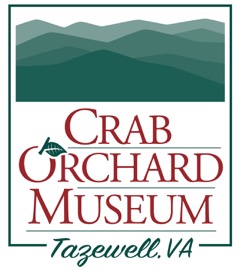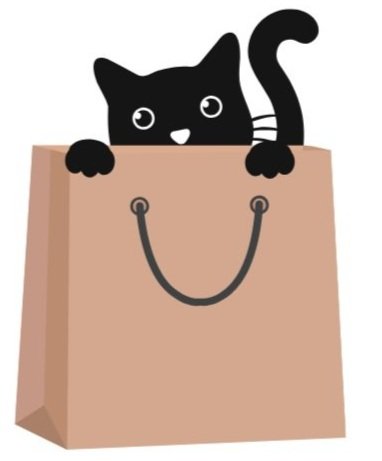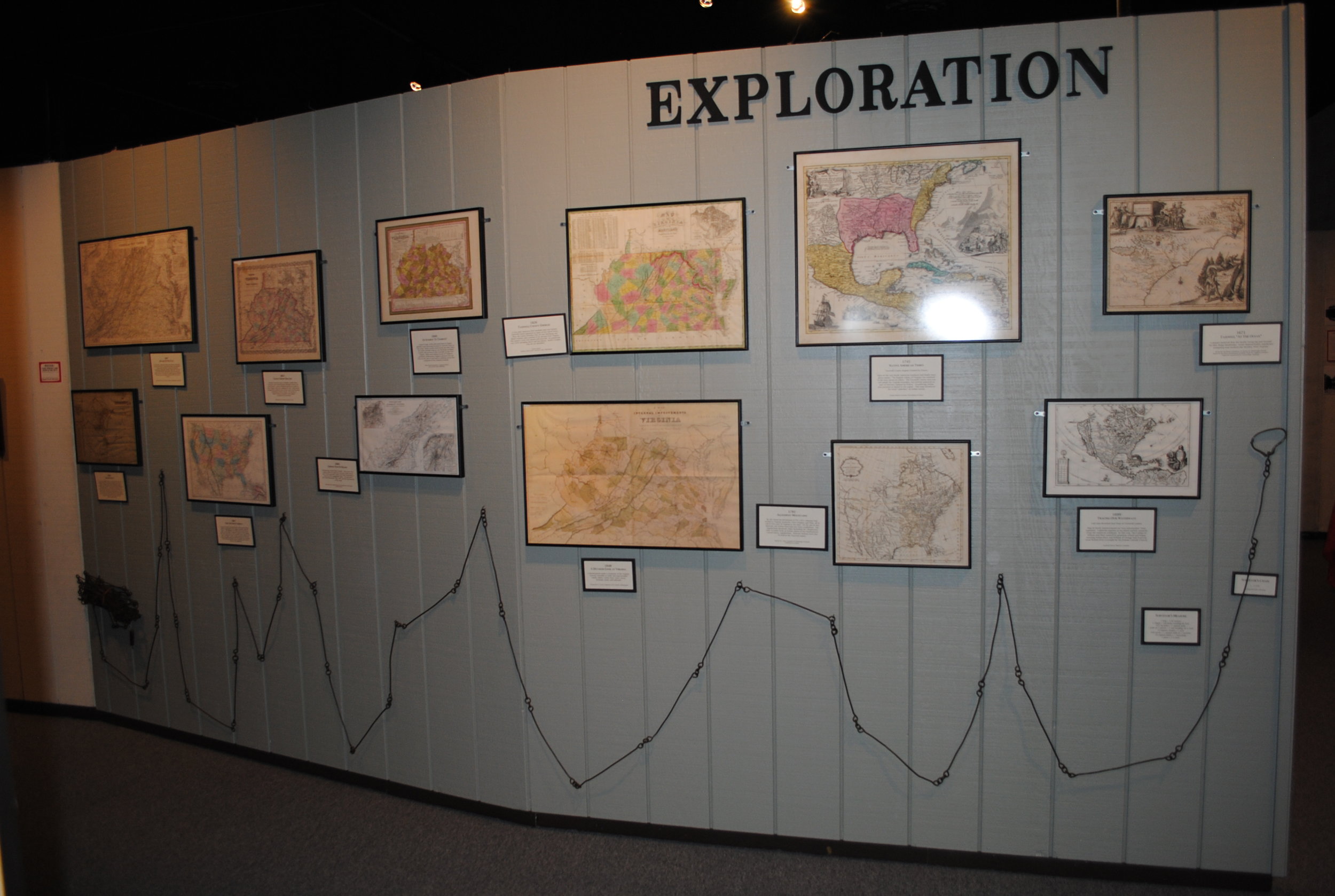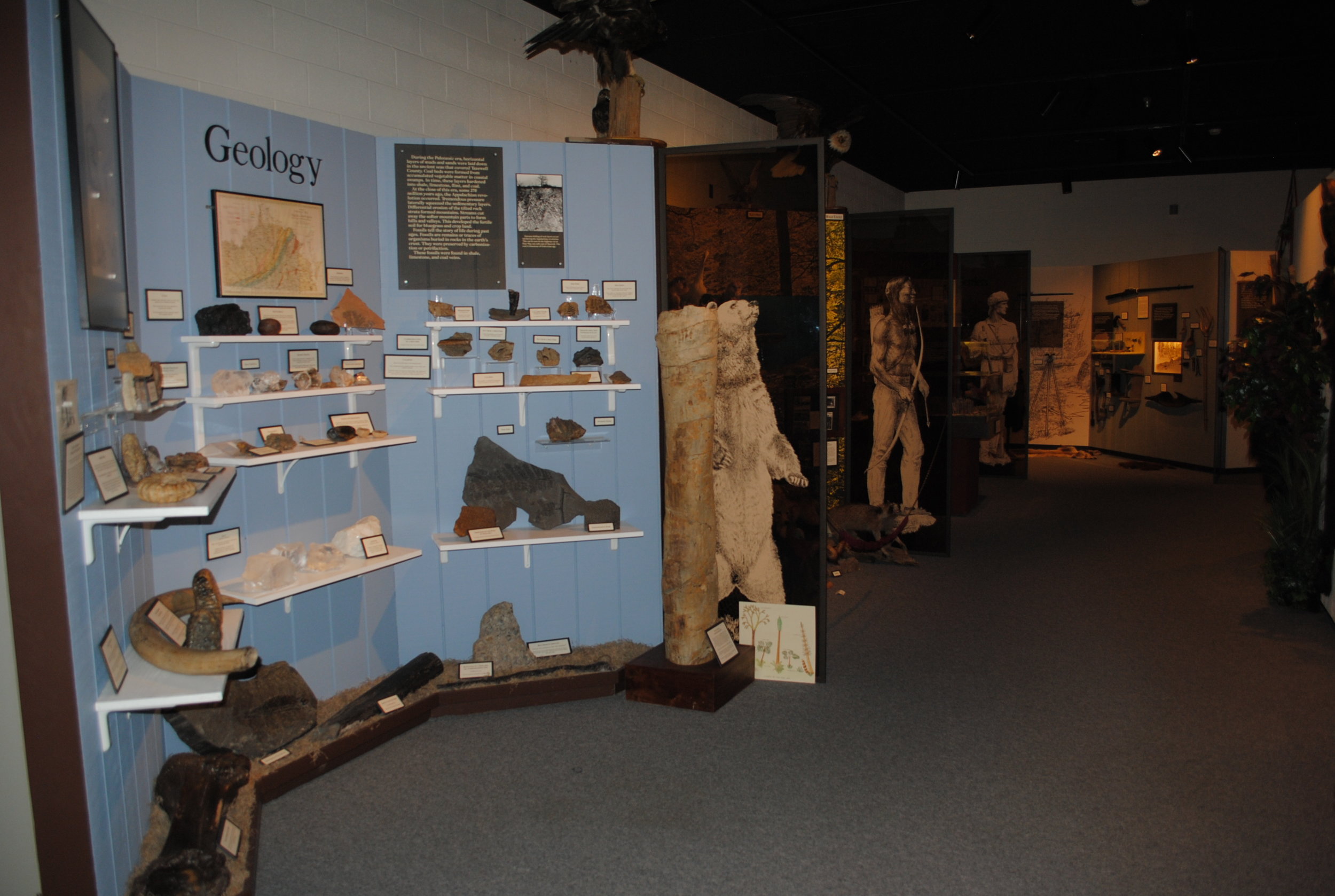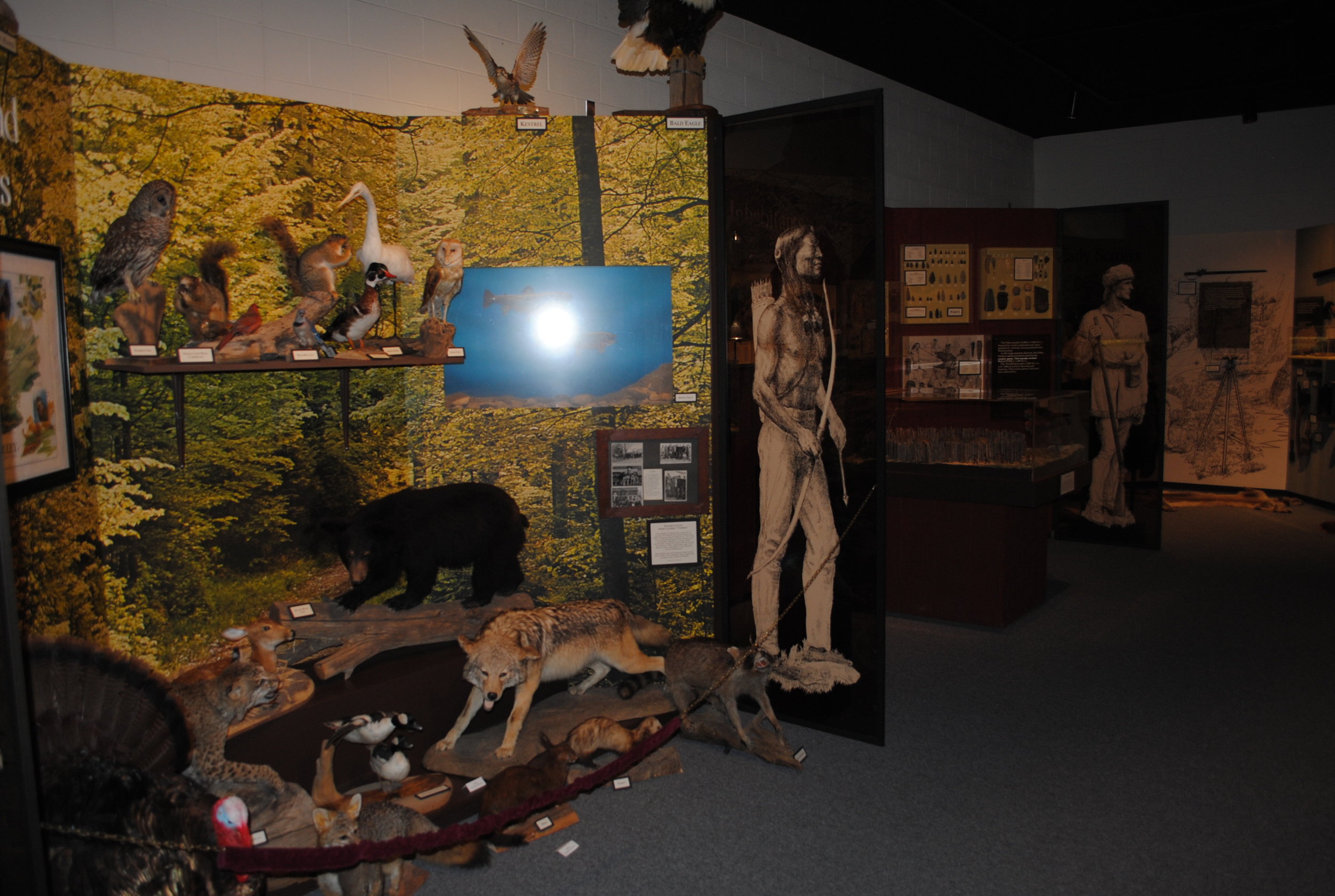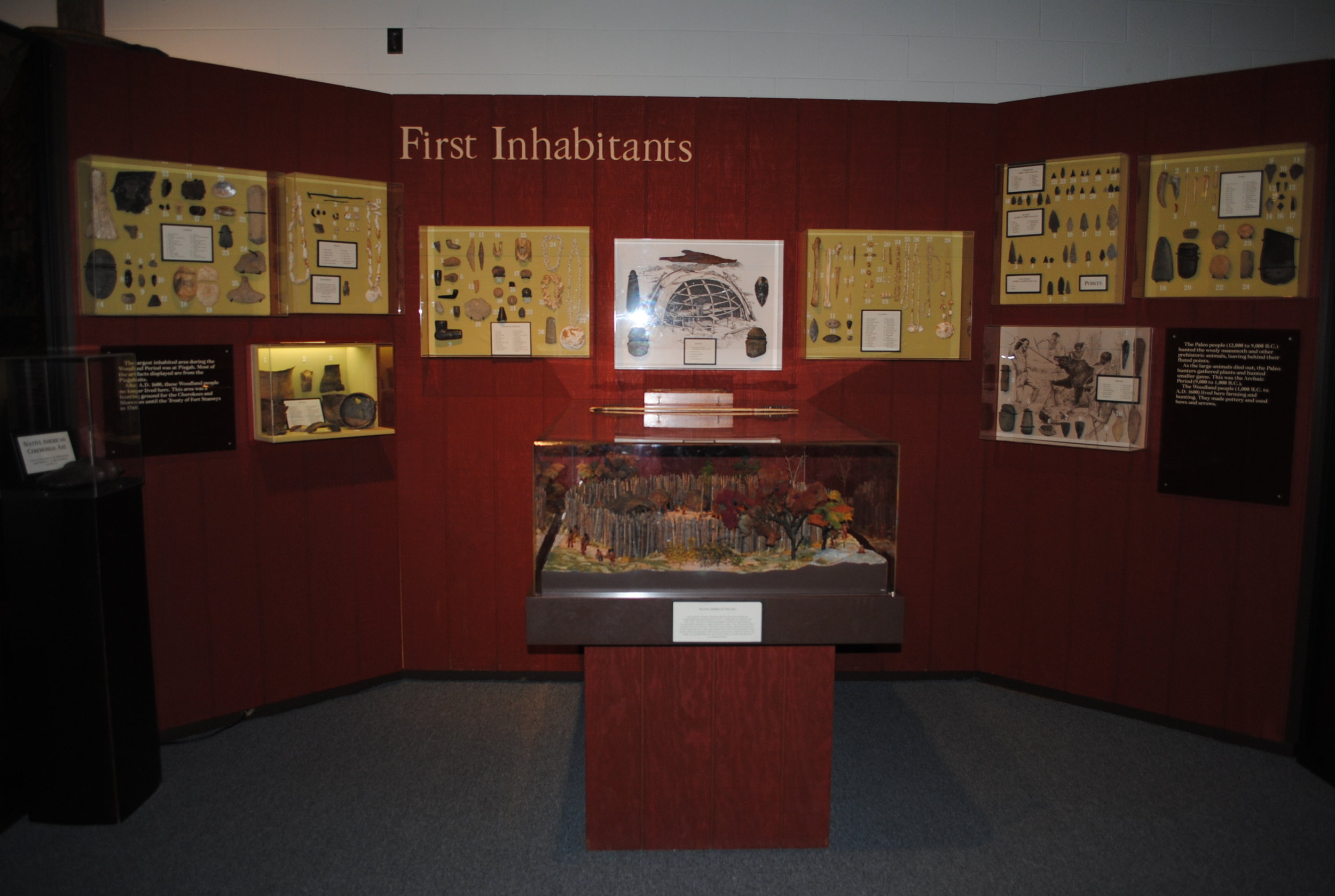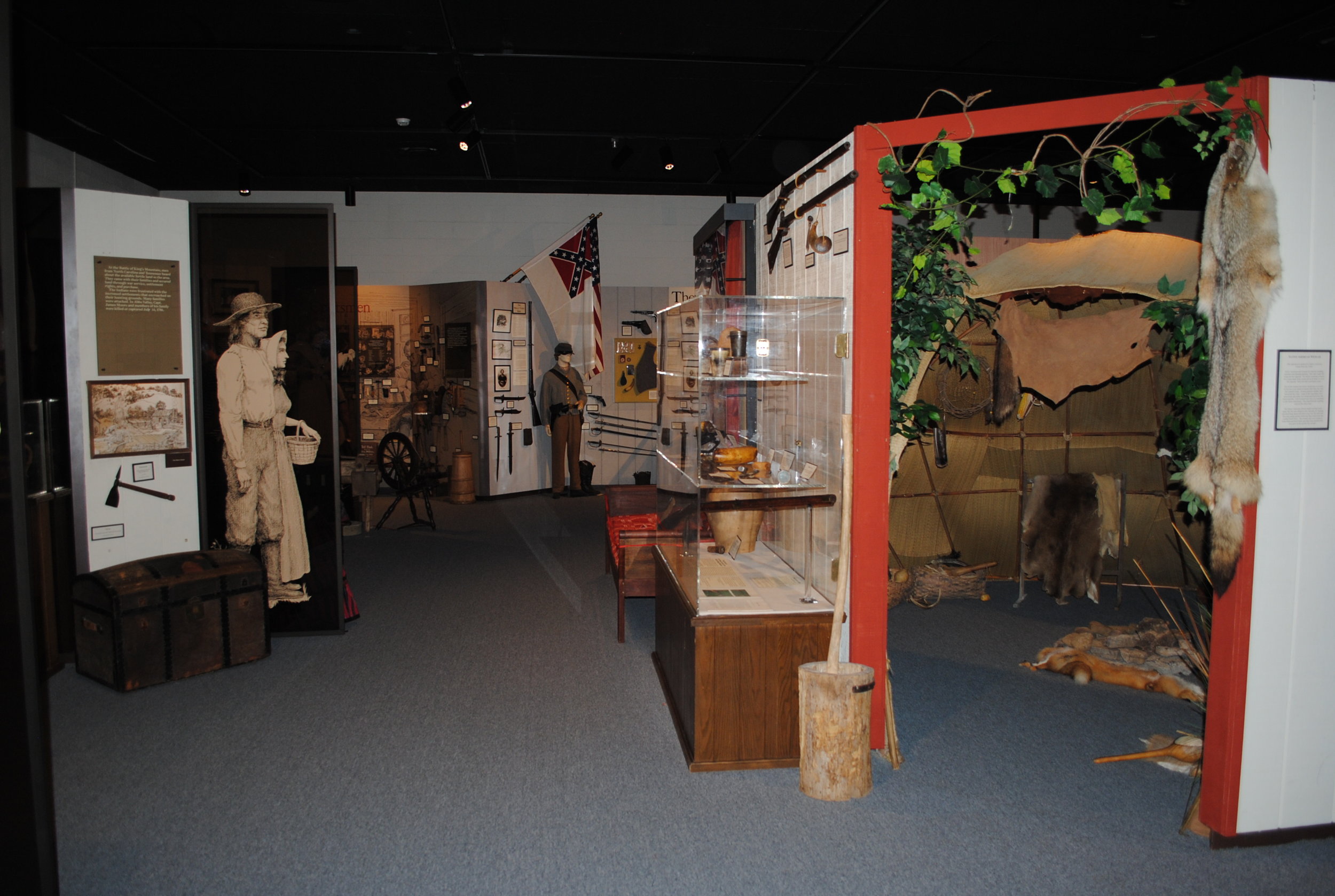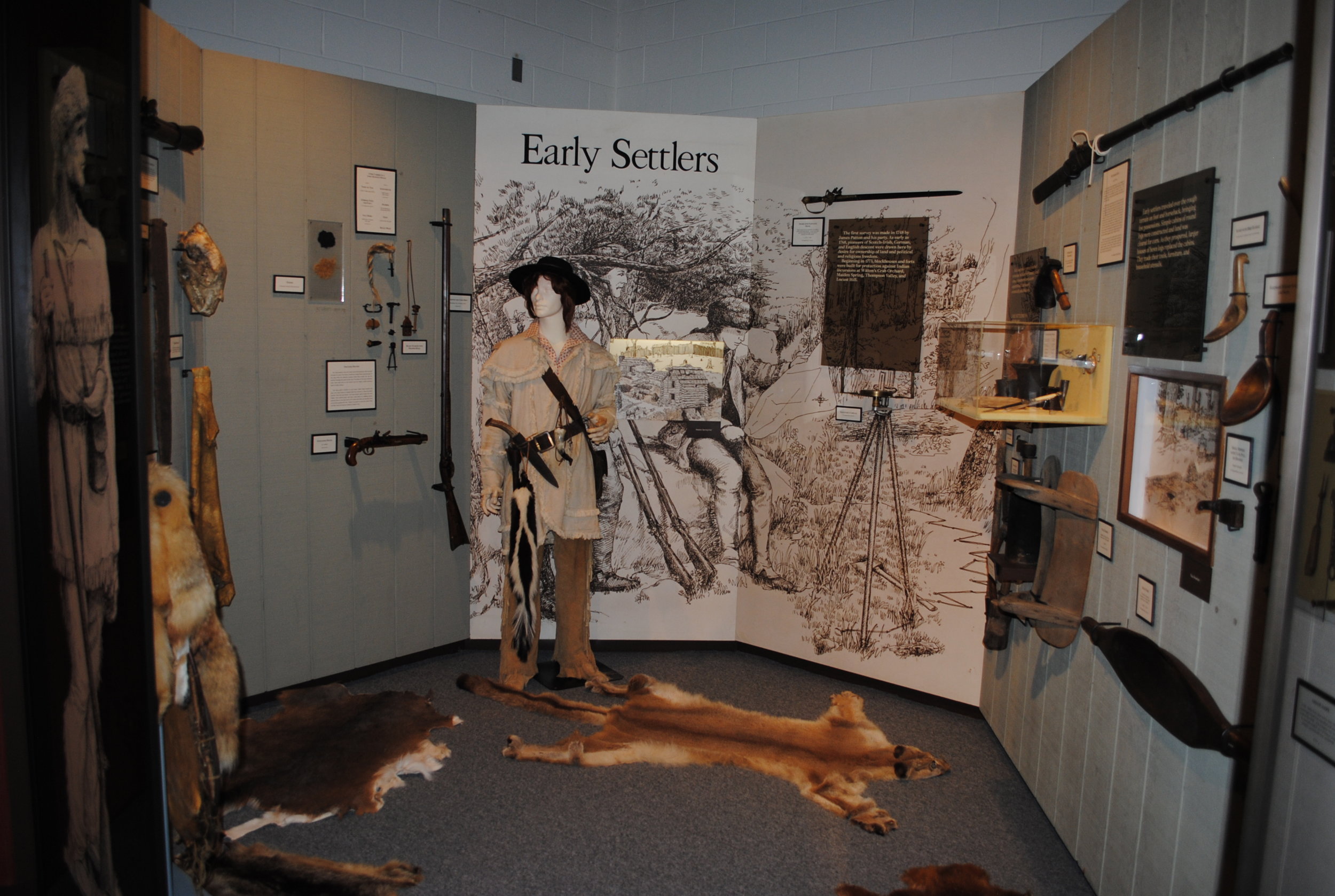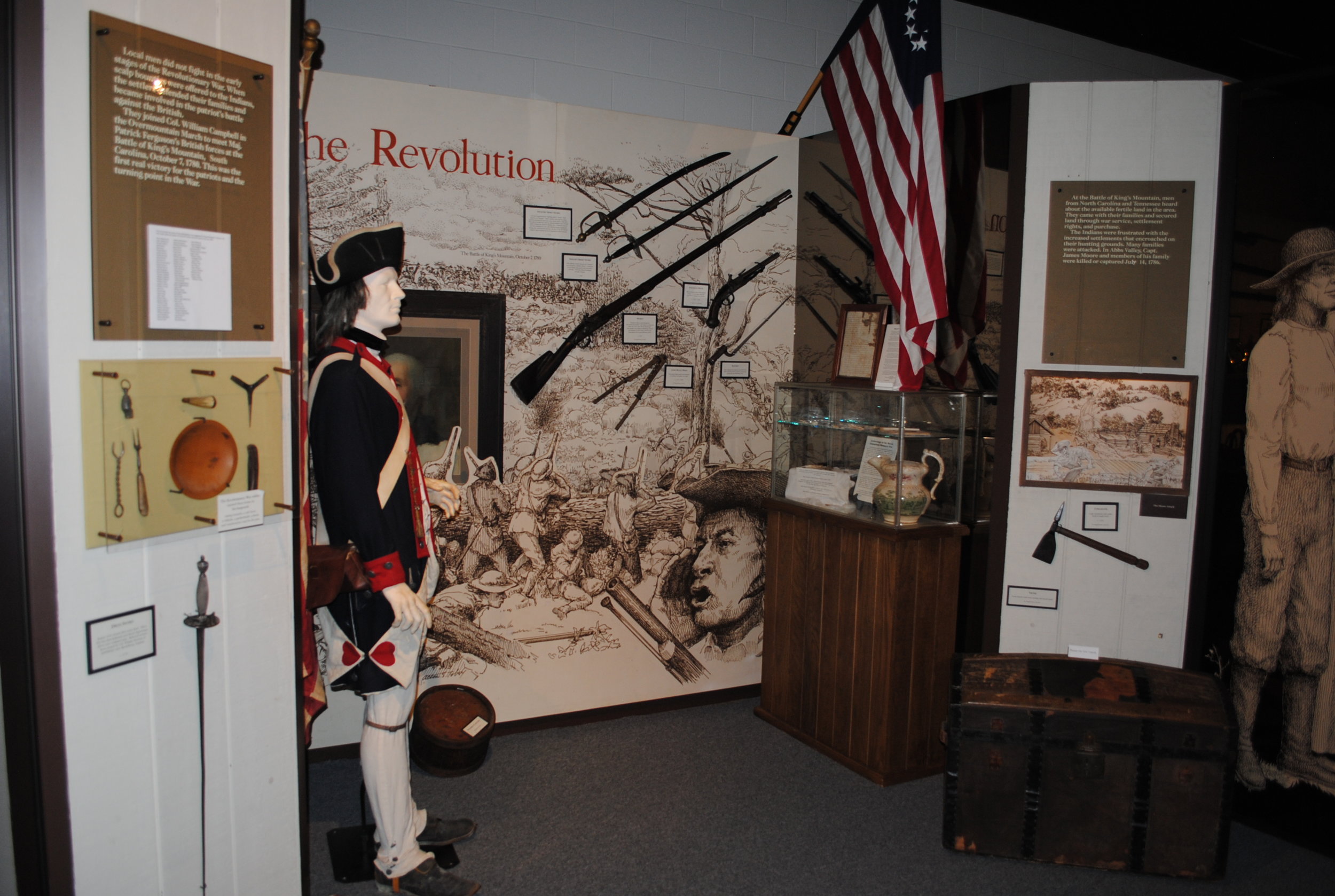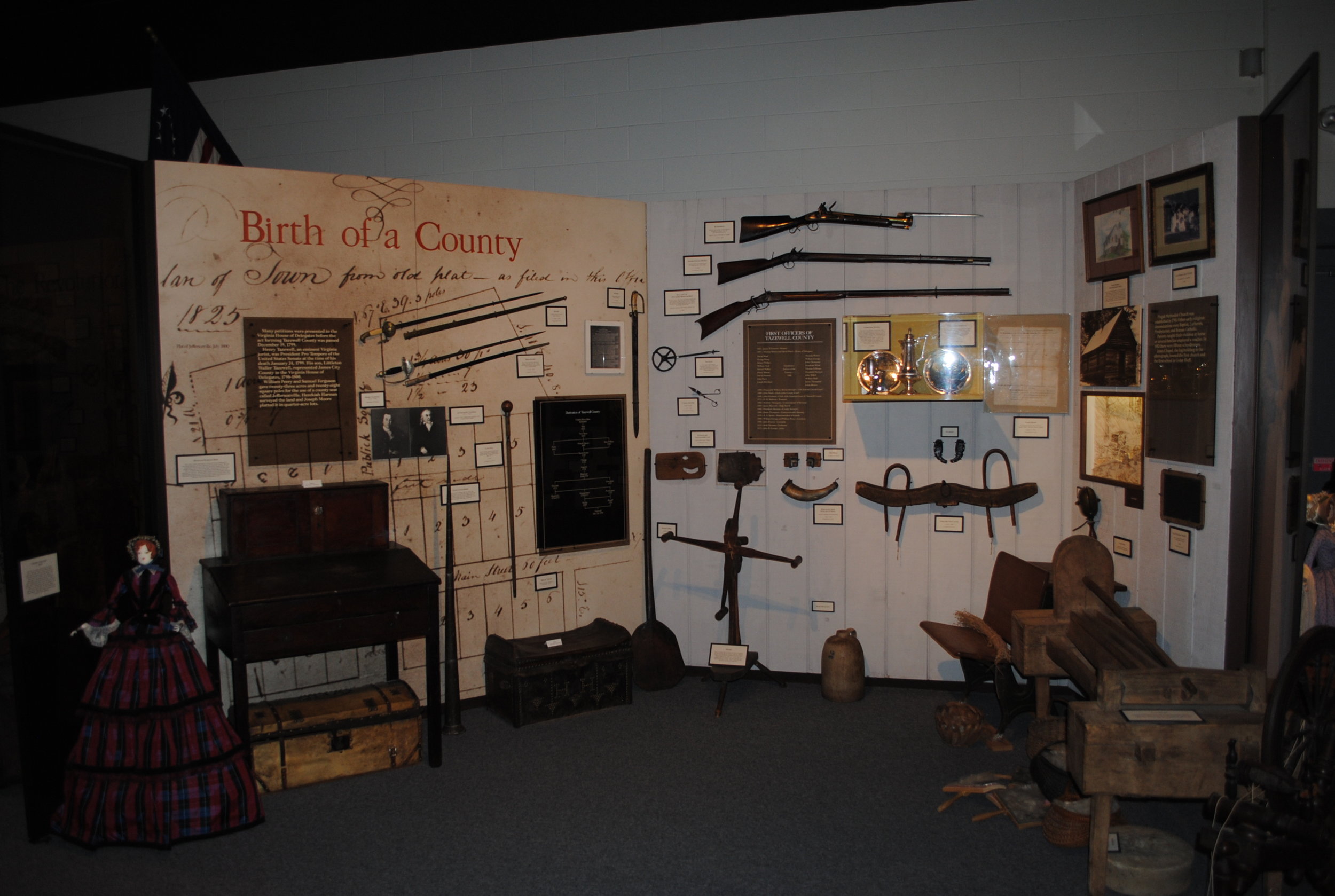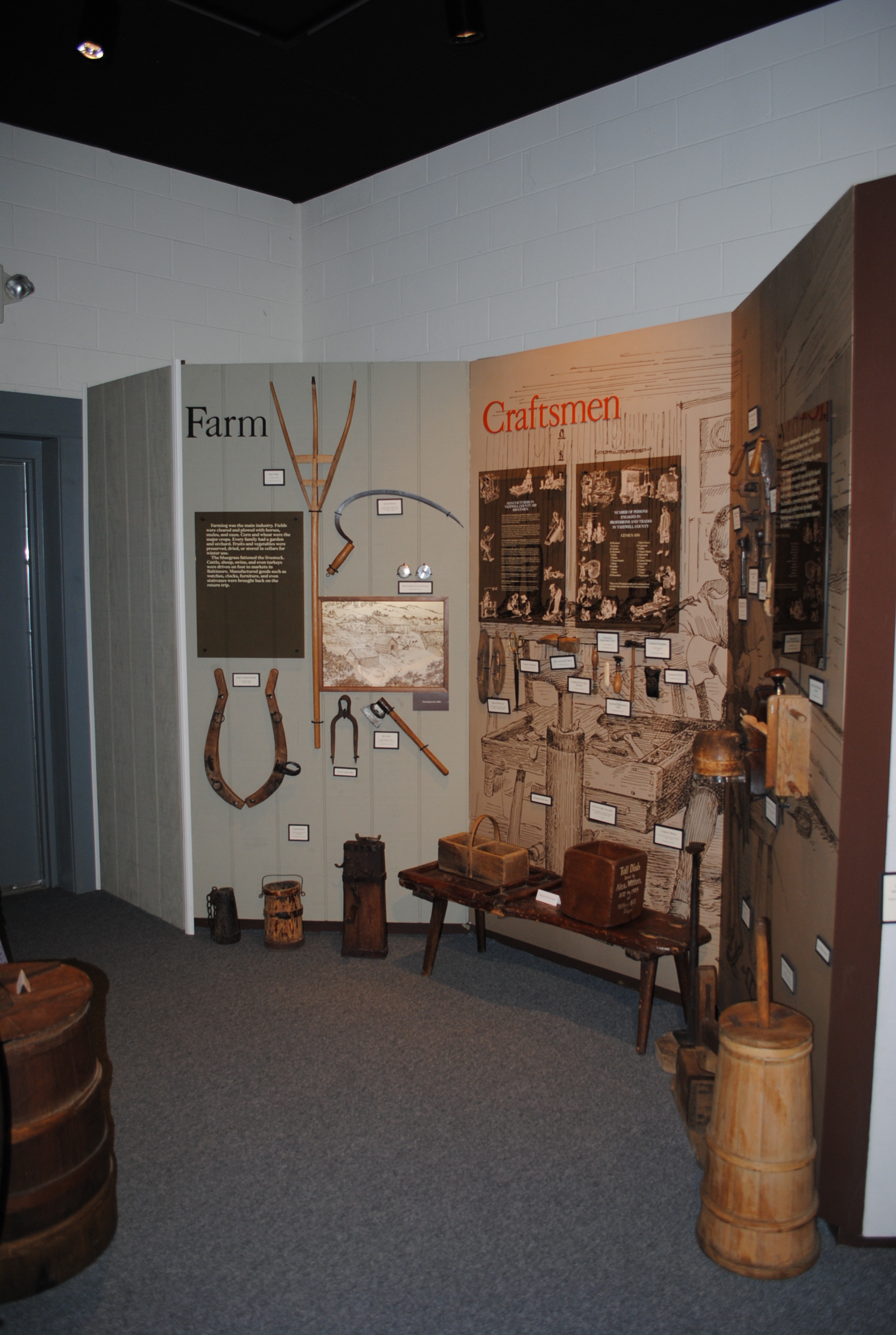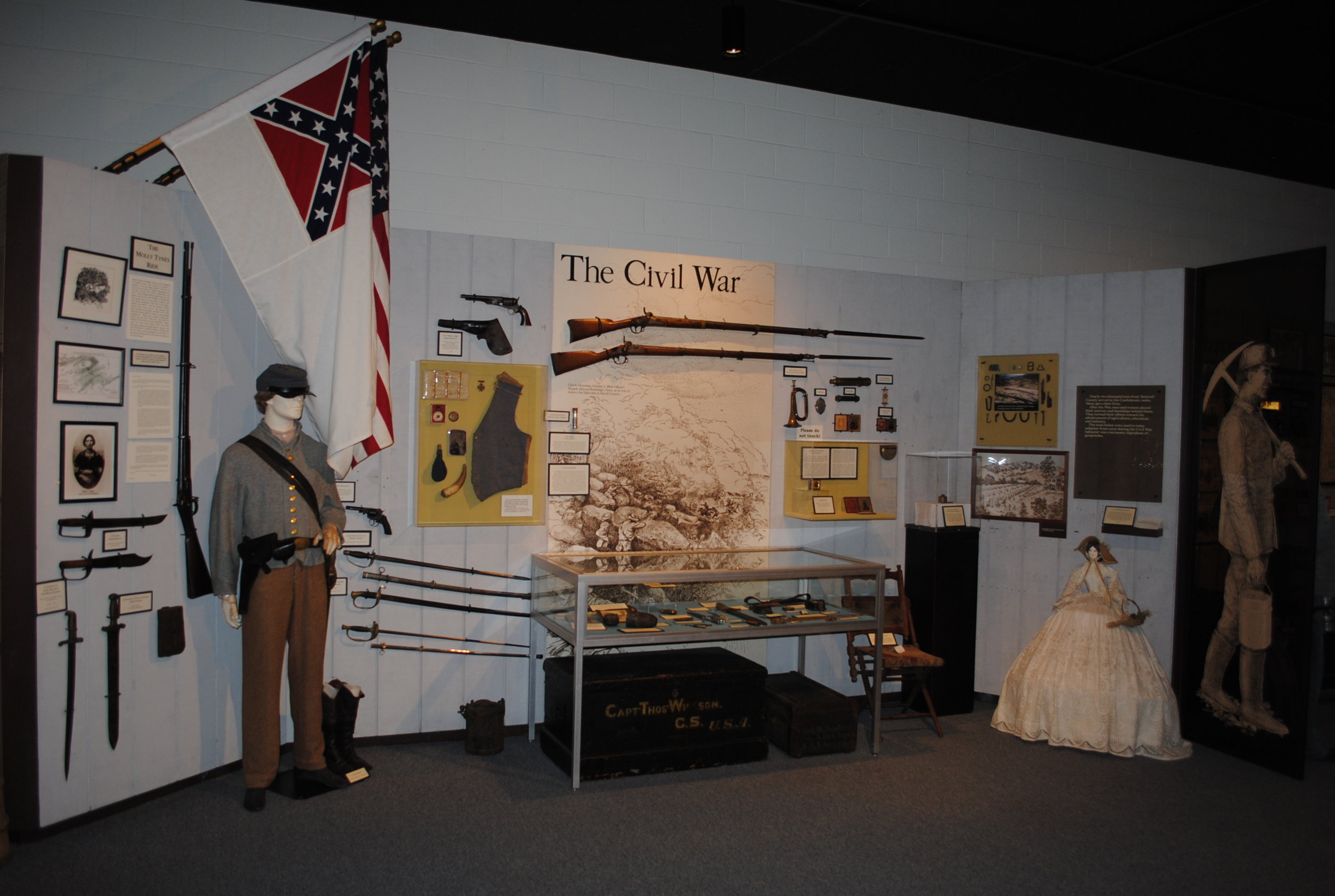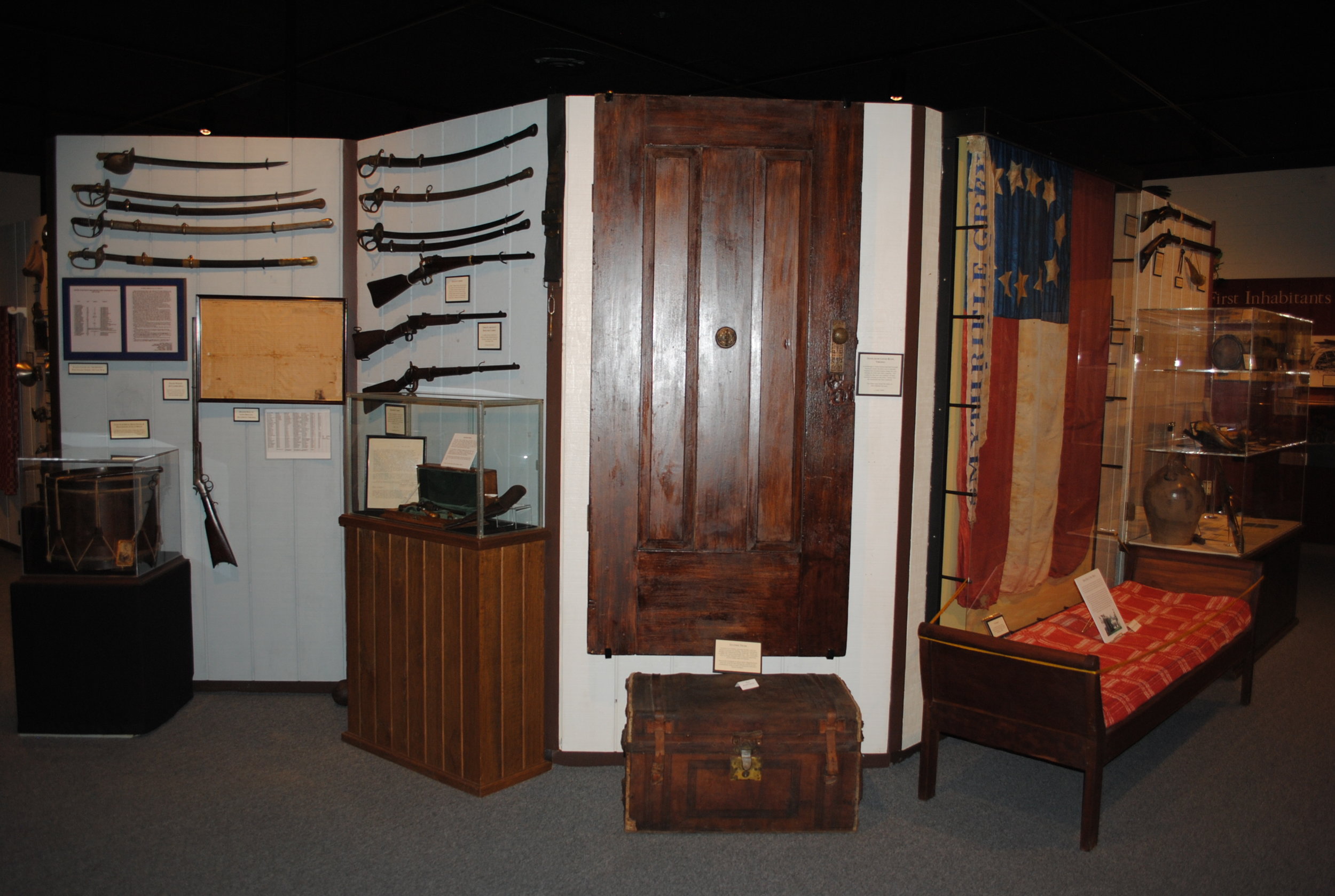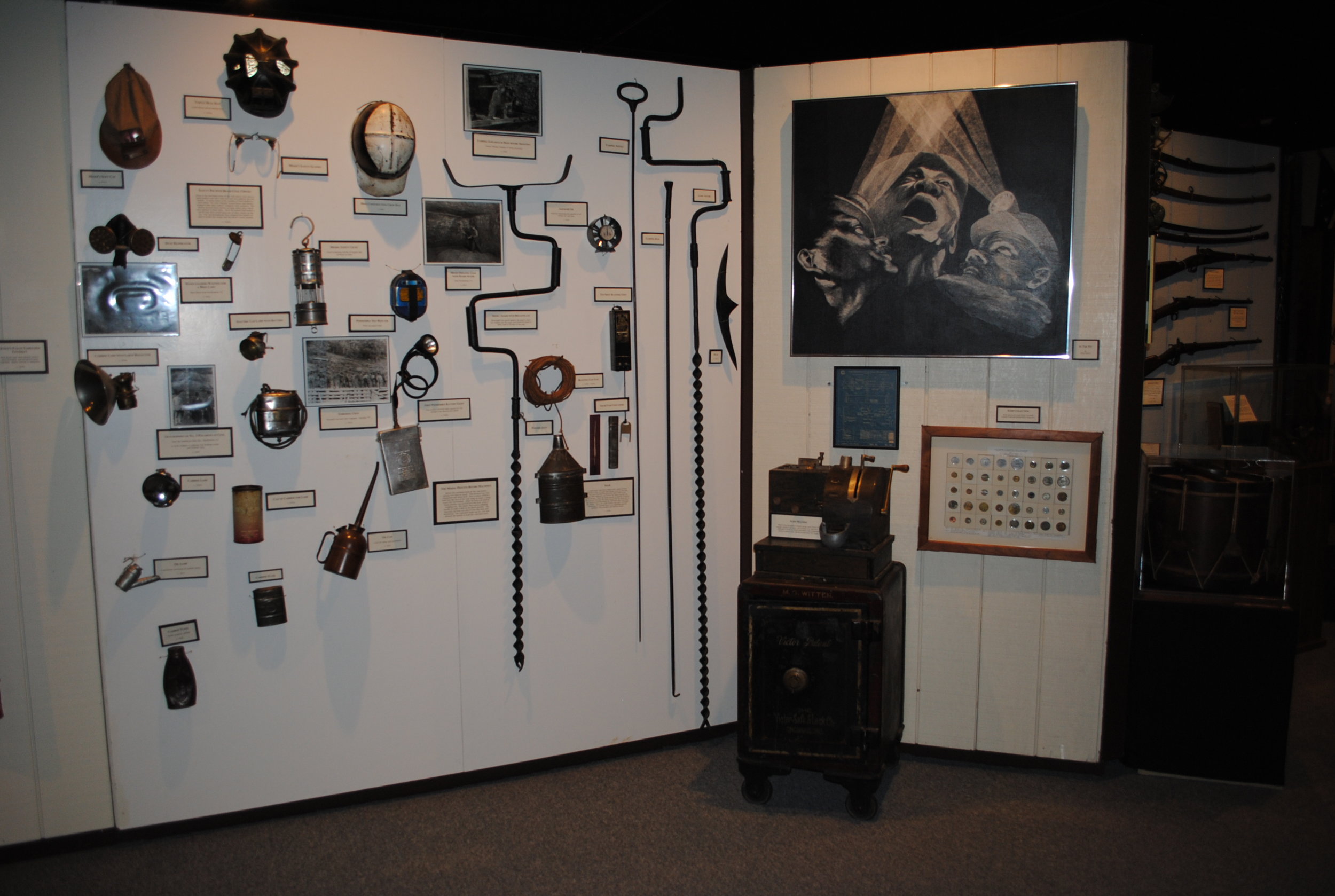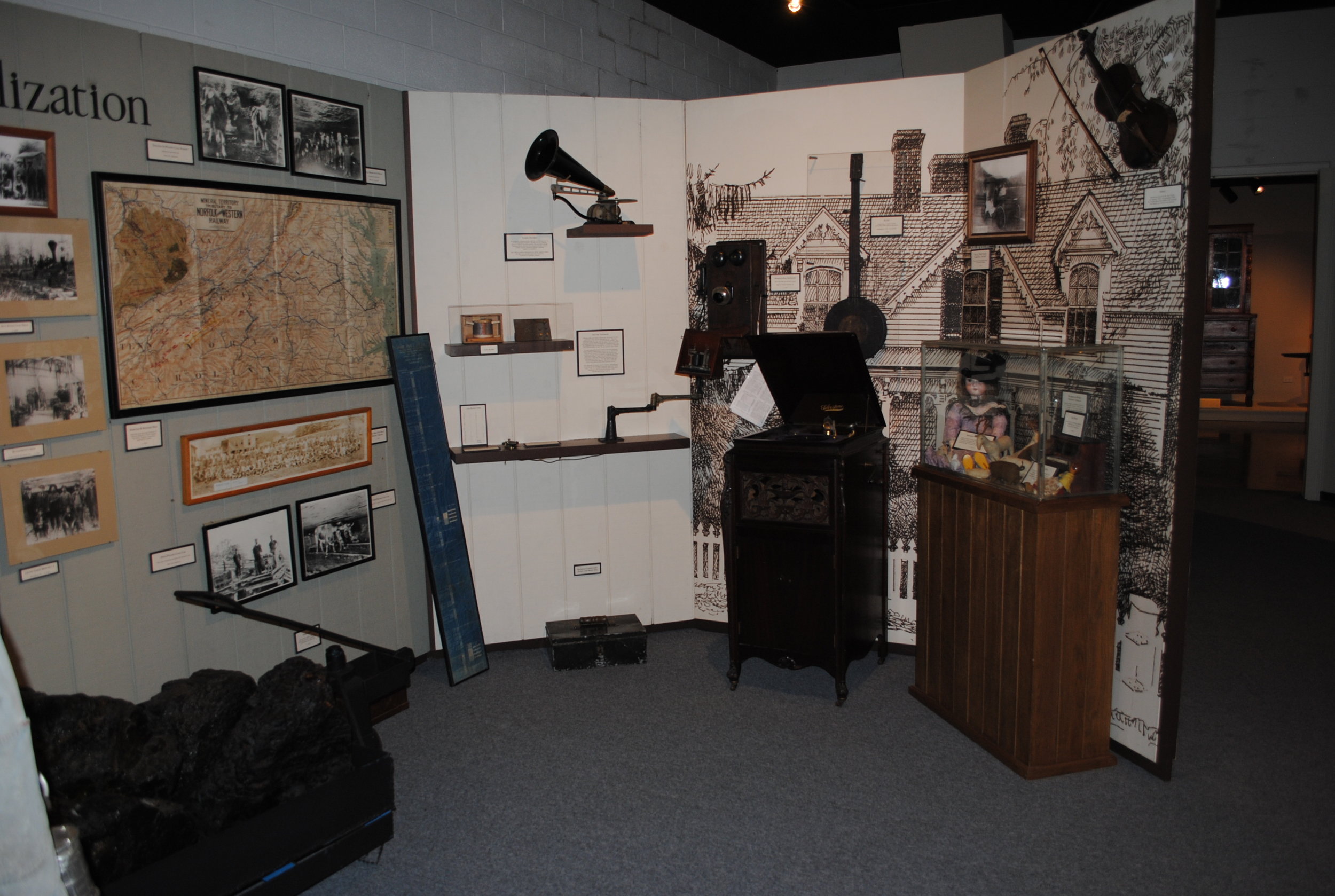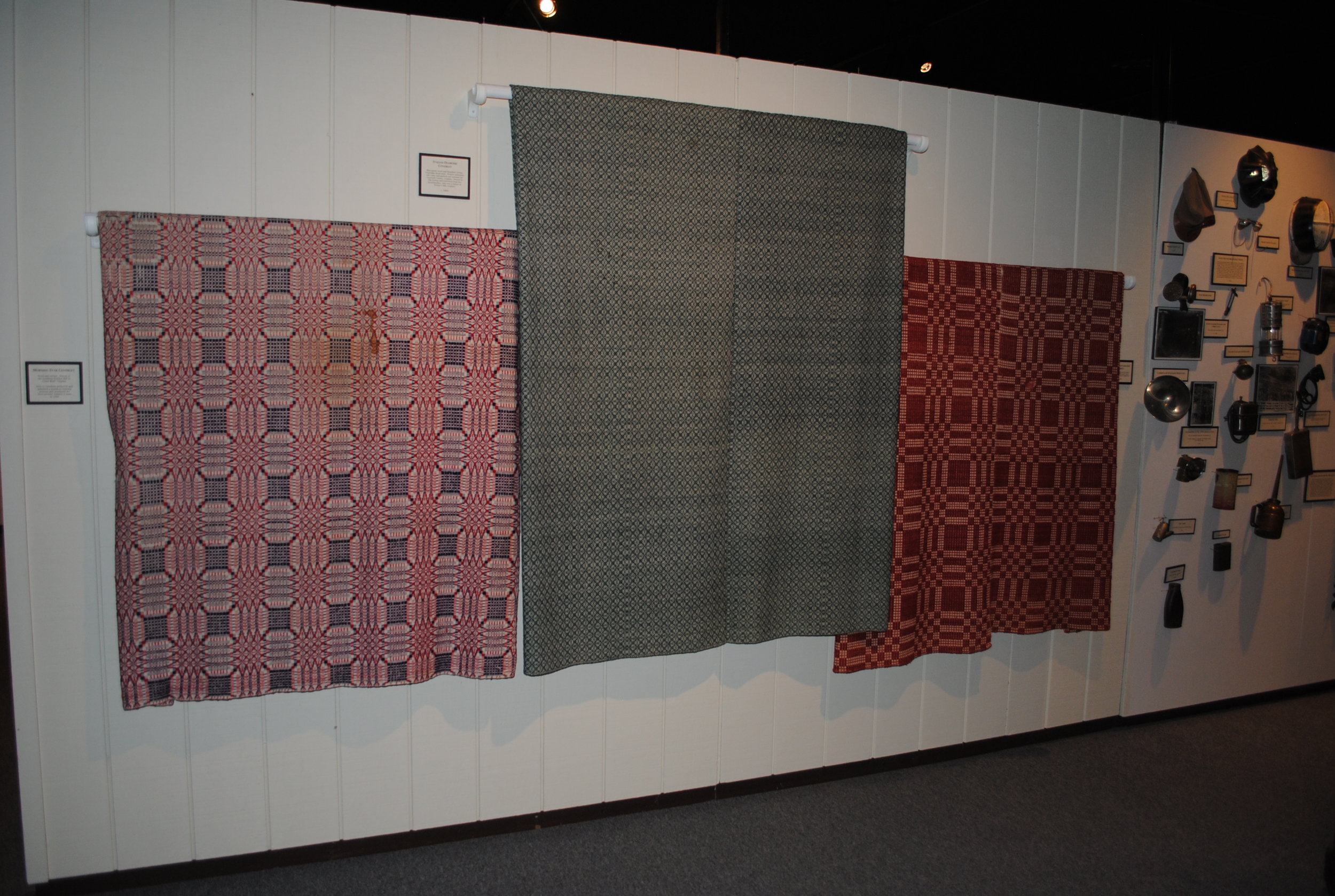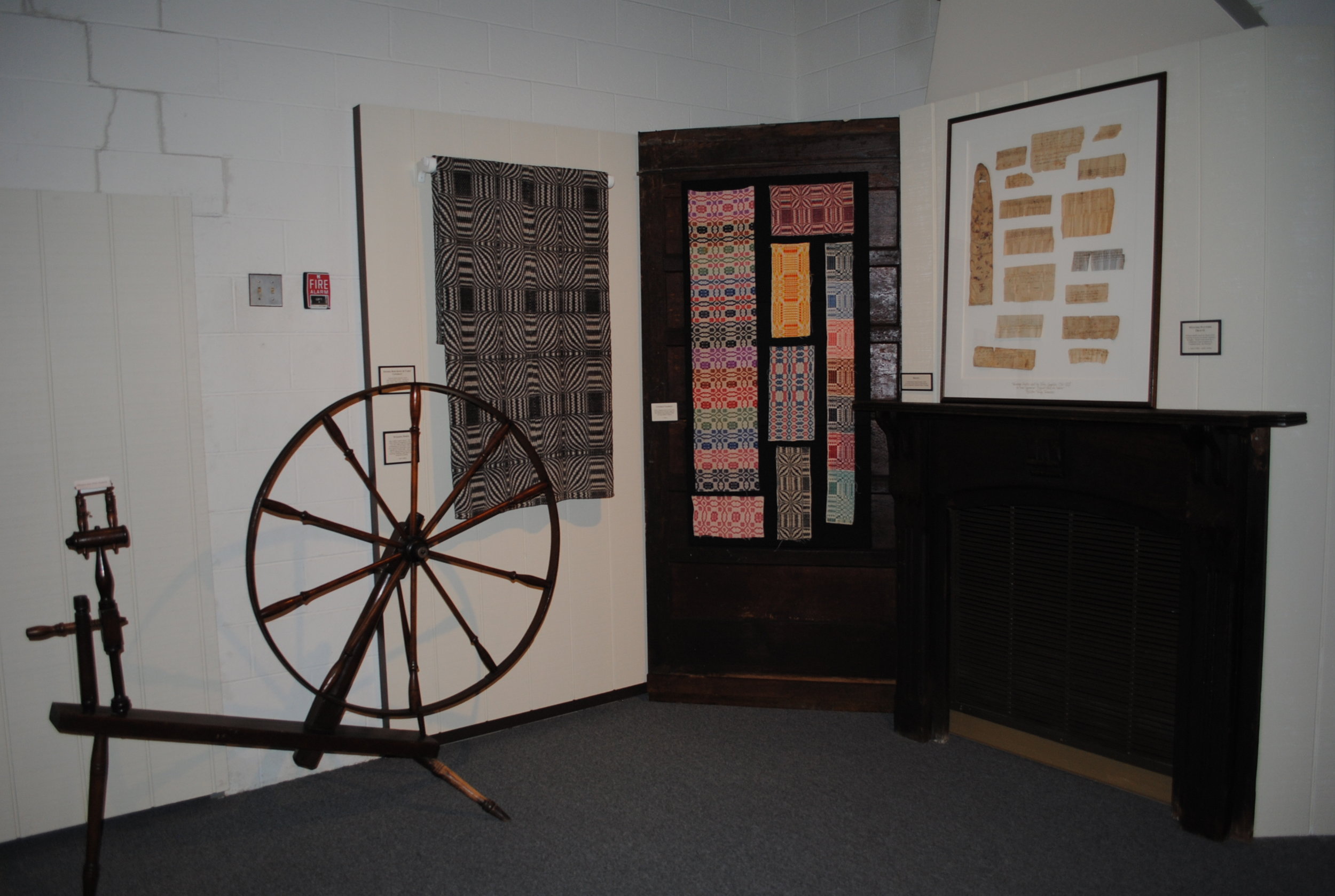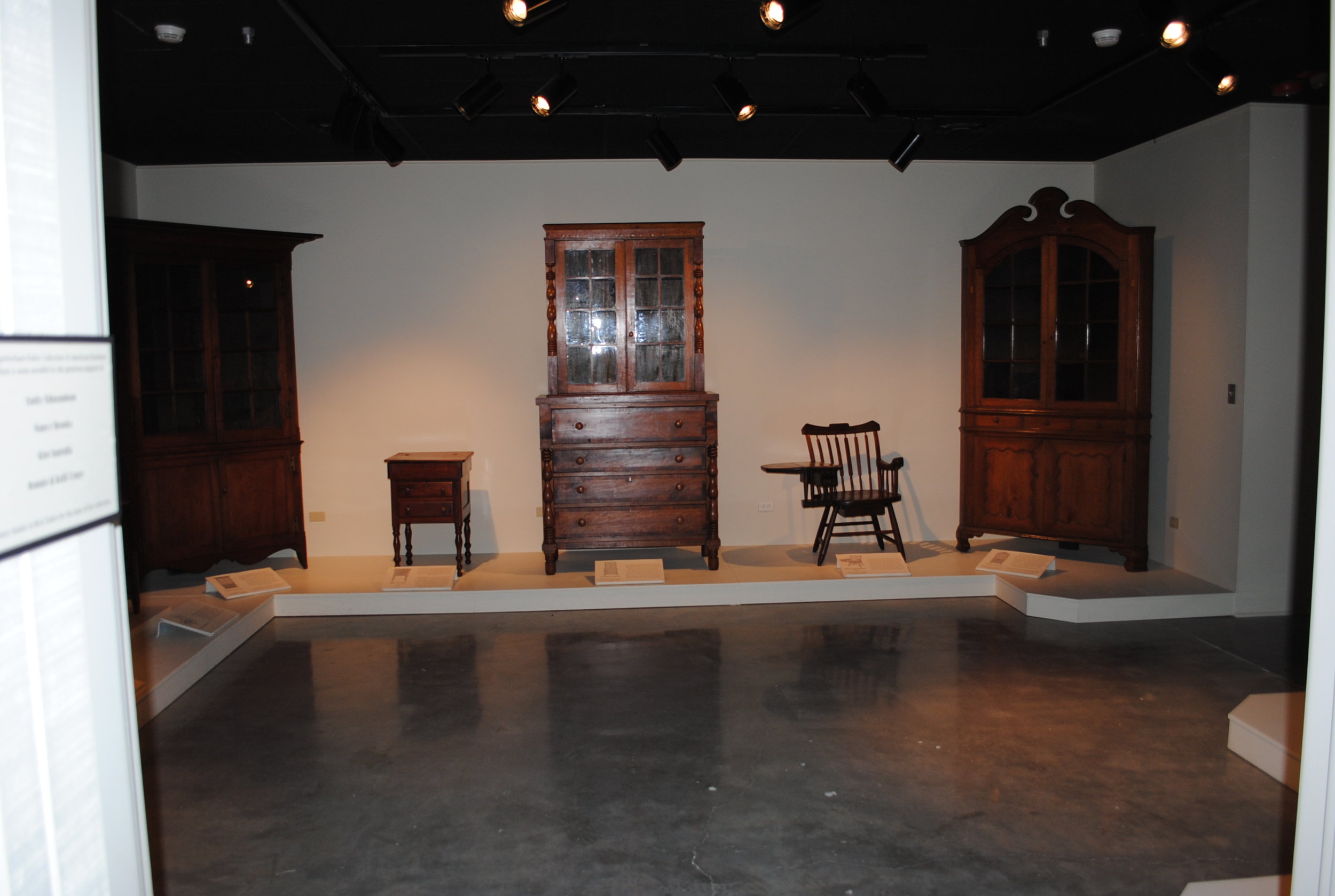Lucie Greever Gallery
The Lucie Greever Gallery is our main exhibition gallery, and is located within the Higginbotham Museum Center.
The gallery houses twelve permanent exhibits and one changing exhibition space.
Each exhibit gallery focuses on a different aspect of the history of Southwest Virginia and Appalachia. Geological specimens, such as coal, salt, and fossils, along with a mastadon tusk and molars, and examples of local wildlife begin the story of the area. The first people to inhabit this land were Native Americans who constructed a palisaded village on this site during the 1500s. A model of the village and an educational replica of a wigwam are found in this gallery, in addition to archaeological artifacts found on site during an archaeological dig that took place during the 1970s. The arrival of the first white settlers, known as "long hunters", arrived in the early 18th century to hunt on the frontier. From these first pioneers, the gallery exhibits follow the lives of the people of Southwest Virginia through the struggles of war, the practices farming and timbering, and the discovery of coal during the 19th century. The last two exhibit galleries feature the decorative arts and focus on textiles and furnishings made in Southwest Virginia and Appalachia.
Currently on exhibit in the changing gallery:
Letting the Cat Out of the Bag
~ Exploring the stories behind phrases and expressions we use every day ~
Our newest exhibit will explore the colorful tapestry of expressions that have become woven into the fabric of every day conversation. By delving into the origins of idioms like “dyed in the wool” and “pull out all the stops”, visitors can appreciate how these phrases emerged from specific historical and cultural contexts.
With engaging artifacts and intriguing historical content, Letting the Cat Out of the Bag will delight language enthusiasts and history buffs alike, revealing how these fascinating phrases have become part of the fabric of our culture and daily conversations.
Letting the Cat Out of the Bag is open to the public now through December 2025
